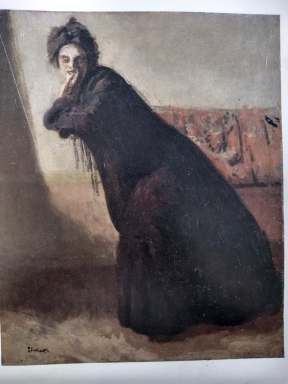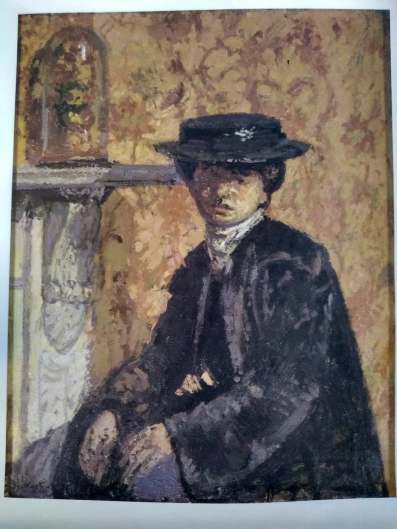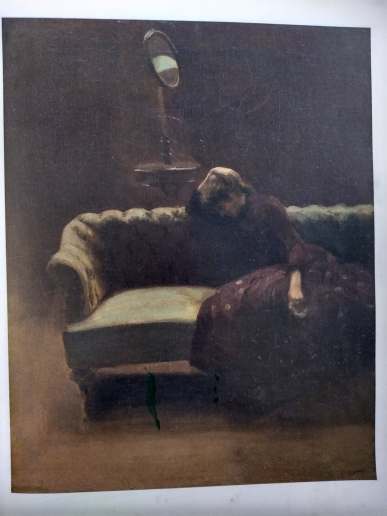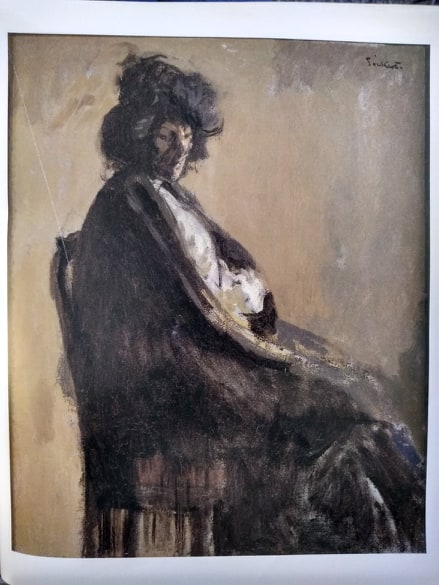I decided to continue my research on artists that have created intimate interior scenes and in my previous research I came across the name Sickert, I was intrigued and wanted to know more about him and his work. The book “Sickert: Paintings” by Wendy Baron and Richard Shone was extremely helpful in finding information about Sickert as well as including a catalogue of his works.
Walter Richard Sickert was born in Munich in 1860 and was a painter, teacher, and writer. He studied at the Slade School of Art but not consistently. Sickert’s subject matter was inspired by the popular music hall and theatre, he also used newspaper photographs and unglamorous domestic life which, at times were sordid affairs, in his works. Sickert was also influenced by two artists which were J. M. Whistler and Edgar Degas. Throughout Sickert’s career, he challenged good taste which he felt bedevilled British art, therefore, creating an understated unique style to him. This means that his work doesn’t technically fit into a category although he was labelled as a latter-day impressionist as well as an intimist and realist.
From the 1880s till the 1930s Sickert created a large body of work consisting of paintings, drawings and, etchings which contained his compelling vision and technical mastery. In 1911 Sickert helped to form Camden Town Group, which became one of the Centuries very few successful modern movements. A lot of Sickert’s early work was considered controversial and often seen as vulgar. However, a few years later his early work shed it’s power to dismay and gained classical status as the product of ” Chef d’ecole”. Sickert’s paintings embody the passing moment, the unrepeatable instant of a look and the tragic view of life in order to capture the viewer.
During the 1930s Sickert created engravings that were based on popular magazines using quite brash colours, Sickert called them English Echoes. These new works however bared no resemblance to Sickert’s earlier works and his old admirers felt that they were pathetic and created by an artist that was losing the use of his faculties.
Below are some of the paintings that Sickert created that stood out to me.
The first painting is ” Le Chale Venitien” which depicts a model thought to be Carolina dell Acqua, who was given this name due to her being frightened of water. Dell Acqua was a friend of La Giuseppina, who was a fellow prostitute. The model is seated on a couch, leaning over the arm, however, she has twisted her neck and waist in order to still face towards Sickert avoiding the disturbance of the picture plane. Although the model is twisted in places she still appears to look graceful due to her shape being smoothed out by her dark clothing, her expression also appears quite playful. The way the light has been created draws the eye to the model complementing her.

This second painting is “The New Home” which like the previous painting depicts a female model although not Carolina dell Acqua this time. She is wearing a large black hat and dark clothes that almost swamp her form in front of a mantelpiece. Unlike ” Le Chale Venitien”, ” The New Home” is very textured in regards to application although the use of colours are similar and is known as being the quintessential study for the Camden Town Group. Although this painting seems like a portrait of an individual person, it is representative of a whole class of people and everyday life, the dirty worn clothes made out of sham velvet showing poverty. Sickert preferred the reality of everyday life which was not always beautiful, unlike other painters who preferred to use beautiful looking models in front of aesthetically pleasing surroundings as there subject matter.

The third painting I selected is “The Acting Manager” also known as ” Rehearsal: the End of the Act”, which is a portrait study of Miss Helen Couper-Black. Helen is depicted collapsed on a sofa due to exhaustion, this is to represent how Helen became manager of all aspects of the theatre company d’Oyly Carte in the US and in England, after taking over from Richard d’Oyly Carte whom she had married after his death. Helen Later became the manager of the Savoy theatre. The colours used are quite dark in order to emphasis the exhaustion taking place. Sickert changed the name of this painting to “The Acting Manager” in 1895 due to the misinterpretations that were taking place.

The final painting is “Putana a Casa” which depicts a female figure, La Giuseppina, one of Sickert’s favourite models to paint. A lot of the time La Giuseppina brought along her friend Carolina del Acqua, both of them were prostitutes hence the title and Sickert relished their company as it was easier for him to have models come to his room meaning that he could spend more time focussing on the models and painting rather than going out looking for scenes and landscapes to paint which would have taken up vital time. La Guiseppina is sat in a chair which was one of Sickert’s typical characteristics alongside the use of placing the prop and model without spending to much time trying to place them convincingly.

References.
| Author | Wendy Baron |
| Year published: | 1992 |
| Book title: | Sickert paintings |
| City: | London |
| Publisher: | Royal Academy of Arts |
